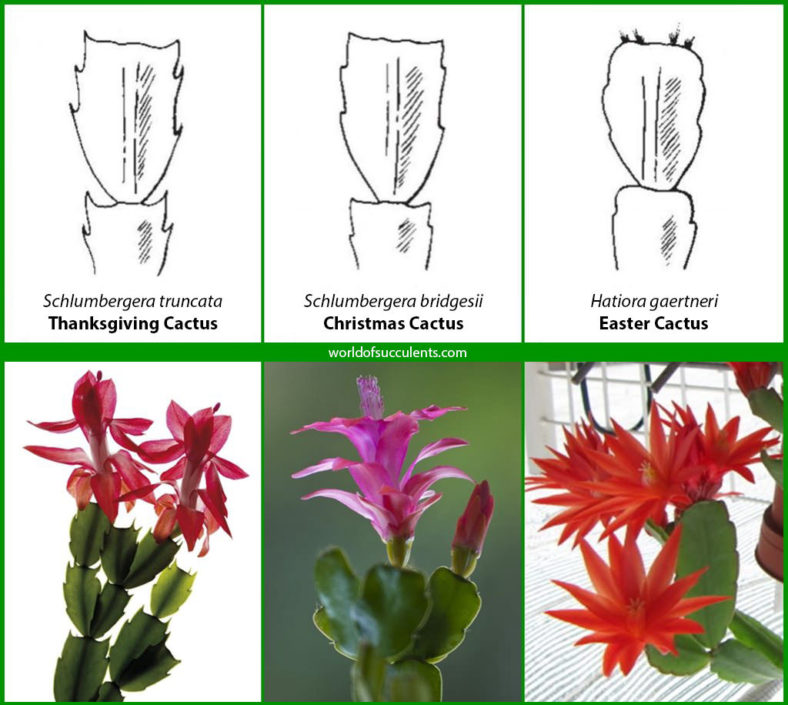Around the holidays, we often see blooming plants from the Cactus family. One of the most popular plants to give or receive during the holiday season is the Christmas Cactus. Or is it an Easter Cactus or Thanksgiving Cactus?
These three cacti species, commonly known as Holiday Cacti, are members of the leaf cacti group. The plant bodies are flattened, and the leaves are actually segmented stems. The flowers are produced from notches in these stems or from the tips. The fuchsia-like flowers last a long time. They are usually pink, but modern hybrids include white, red, yellow, and purple varieties.
There are reports of plants being handed down from generation to generation and being over 100 years old.
The main difference between Thanksgiving Cactus, Christmas Cactus, and Easter Cactus is the time of bloom. As their common names suggest, a Thanksgiving Cactus can bloom in late fall, one month before the Christmas Cactus. The Easter Cactus starts producing flower buds in February. Regardless of type, there are steps to follow to ensure bloom.

The difference is also found in the shape of the leaves. The Thanksgiving Cactus (Schlumbergera truncata) has very sharp, claw-like projections along the edges of its leaves. The Christmas Cactus (Schlumbergera bridgesii) has leaf projections that are more scalloped or teardrop-shaped. Finally, the Easter Cactus (Hatiora gaertneri, formerly known as Rhipsalidopsis gaertneri) has very rounded edges centralized on the leaf.
All of these three cacti are known as short-day plants. To induce the plant to bloom, it must have 12 to 24 hours of darkness and cool temperatures. If you have oversummered your plant outdoors or purchased it from a florist or nursery, keep it in a cool, dark place until it sets buds. A seldom-used bedroom or lower level is the ideal place. The Christmas Cactus and Thanksgiving Cactus require approximately six weeks of short days to bloom, whereas the Easter Cactus requires 8 to 12 weeks of short days to bloom, hence the name Easter Cactus. When the buds appear, bring them into a warmer area for your enjoyment. Sometimes, a plant might start to drop buds at this time. That could be due to drafts, too-warm temperatures, too much water, or direct sunlight. The plants enjoy bright light but not direct sunlight. The soil should be dry to a depth of 1 inch (2.5 cm) below the surface before watering, and not fertilized or repotted while blooming. The plants seem to do the best when root-bound.
The Christmas Cactus and Thanksgiving Cactus may re-bloom again for you in the spring, but not as profusely as holiday-time blooms. To encourage springtime blooms, return the plant to short-day conditions.
These plants are relatively disease-free unless overwatered. If they turn reddish, it indicates too much sun, a lack of phosphorus, or a lack of water.
Source: iastate.edu
Links
- Succupedia: Browse succulents by Scientific Name, Common Name, Genus, Family, USDA Hardiness Zone, Origin, or cacti by Genus